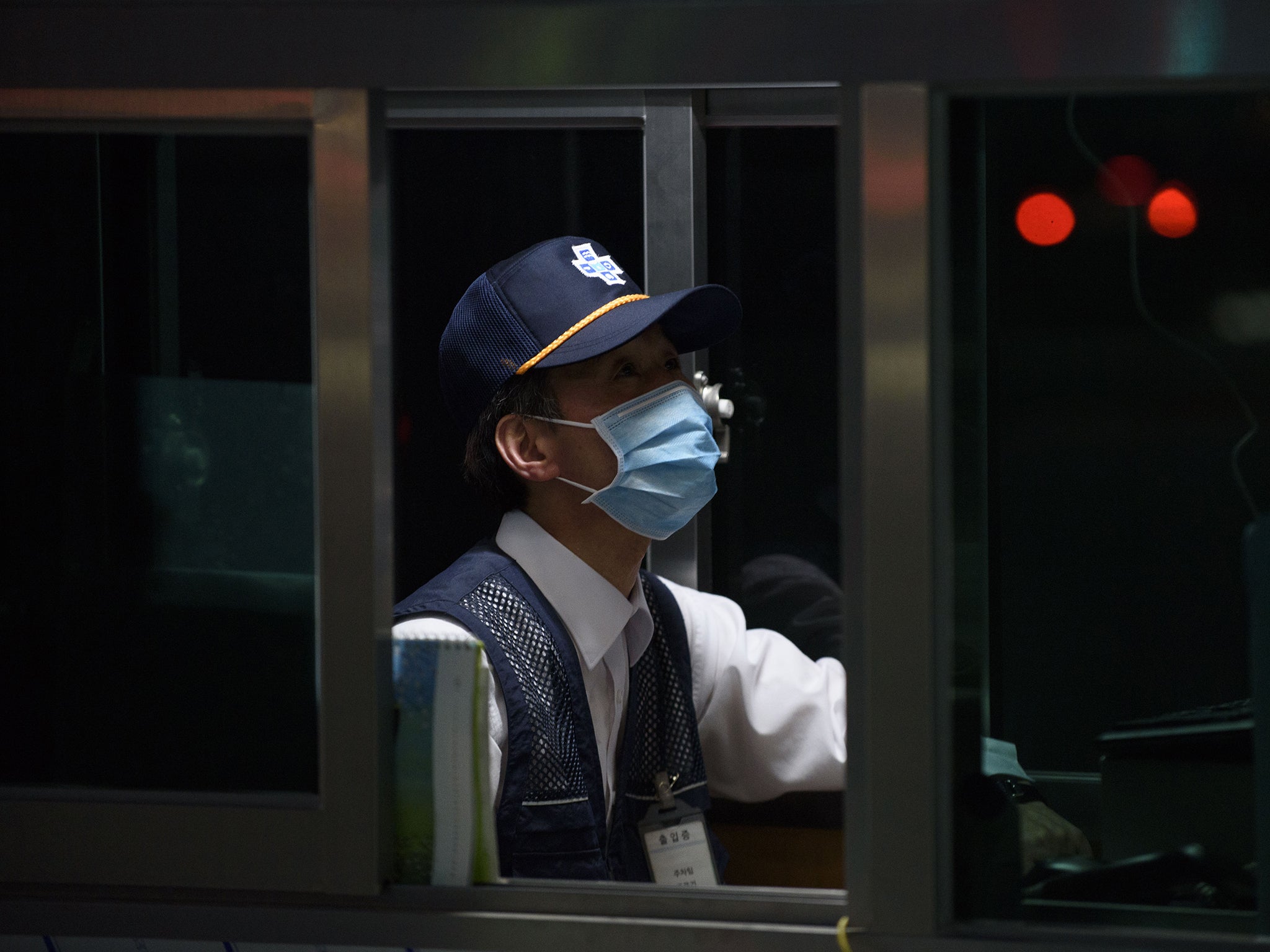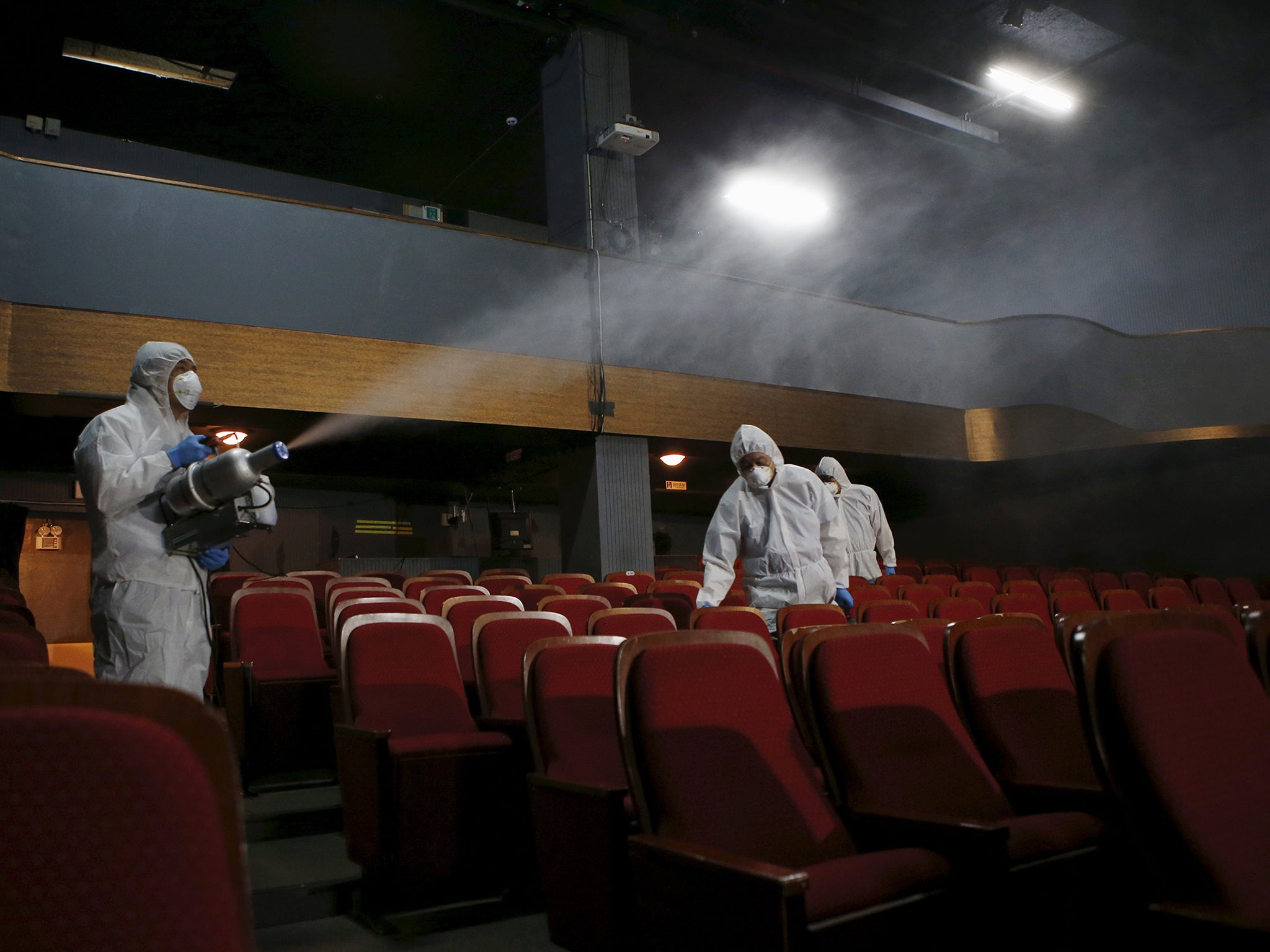‘Super-spreader’ responsible for nearly half of Mers cases in South Korea
Researchers have discovered how Mers spread at an alarming rate in Seoul last year, jumping from person to person until 36 were dead, 186 infected and thousands quarantined

Your support helps us to tell the story
From reproductive rights to climate change to Big Tech, The Independent is on the ground when the story is developing. Whether it's investigating the financials of Elon Musk's pro-Trump PAC or producing our latest documentary, 'The A Word', which shines a light on the American women fighting for reproductive rights, we know how important it is to parse out the facts from the messaging.
At such a critical moment in US history, we need reporters on the ground. Your donation allows us to keep sending journalists to speak to both sides of the story.
The Independent is trusted by Americans across the entire political spectrum. And unlike many other quality news outlets, we choose not to lock Americans out of our reporting and analysis with paywalls. We believe quality journalism should be available to everyone, paid for by those who can afford it.
Your support makes all the difference.The outbreak of Middle East Respiratory Syndrome (Mers) in the huge megalopolis of Seoul from May to July last year was among the most chilling examples of how fast infectious diseases can spread in our modern world.
From a single businessman who acquired the virus abroad, the disease jumped rapidly from person to person until 36 were dead, 186 infected and thousands were quarantined –leaving huge swaths of the South Korean capital region, where 25 million people live, paralysed with fear.
Schools closed, department store sales tanked, and tourist visas were cancelled. The economic toll was so severe that the country's central bank had to cut interest rates.
Now, doctors involved in the care of the first patients have gone back and documented in exacting detail the geography of Mers as it spread in one hospital. In a paper published last week in journal The Lancet, Sun Young Cho and colleagues reconstructed the transmission of the virus through a series of maps, tables and diagrams that would have made Michael Crichton shudder.
First identified in Saudi Arabia in 2012, Mers has since made its way around the world and infected people in 27 countries. The illness is severe, with patients developing fever, cough and respiratory distress. The death rate is believed to be more than 30 per cent.
One of the most revealing details in the analysis is its finding that the traveller, dubbed Patient 1, wasn't the “super-spreader” as previously thought. Patient 1, who was 68, transmitted the virus to another man early in his illness and before he knew he had Mers. It was this other man, 35-year-old Patient 14, who exposed so many others.
Both men first were seen at Pyeongtaek St Mary's Hospital, a regional facility that had opened months earlier, for what appeared at the time to be pneumonia. They were treated on the same floor, according to health investigators. Both recovered enough to be released.
When their conditions worsened, Patient 1 and Patient 14 separately sought help at one of Seoul's premier health centres — the Samsung Medical Center, a massive university-affiliated hospital with 1,982 beds and a staff of more than 7,000.
Patient 14's story at Samsung began when he arrived in the emergency department and was treated for breathing problems. He was given a mask, the authors note, but “frequently could not hold it because of severe respiratory symptoms.” At the time, doctors did not suspect he had been exposed to Mers, so he was not isolated. But two days later, he was contacted by Korean health authorities about his potential contact with Patient 1.

The potential damage was estimated to be vast. A total of 1,576 people – 675 patients, 683 visitors and 218 health-care workers – were identified as contacts. And testing confirmed doctors' worst fears. The attack rate of the virus, calculated by dividing the number of people infected by the number exposed, was extremely high and caused an “epidemic curve” of cases.
For the purposes of analysis, the researchers divided the patients into three risk groups. Those in Group A, considered close contacts, had been in the same zone of the emergency room as Patient 14. Close contact with an infectious patient is traditionally defined as within six feet or within the same room or area for a prolonged period. Group B consisted of people who were treated in different zones but had overlapped with Patient 14 in the registration area or radiology suite. Group C included patients who were treated in different zones and did not otherwise directly overlap with Patient 14 in space or time in any specific location.
The overall attack rate for patients and visitors was only 2 per cent in Group C (15 of 1,003) and 5 per cent in Group B (six of 116). But for Group A it was incredibly high at 20 per cent (47 of 239). The rate of infection for health-care workers was also just 2 per cent (five of 218).
The analysis turned up other worrisome details about the virulence of the virus: Several patients in the emergency department got Mers although Patient 14's bed was not adjacent to theirs. In one case, it was about 20 feet away. And numerous visitors accompanying loved ones in the emergency department were also infected. As for the incubation period, it averaged seven days, but patients in closest proximity to Patient 14 appeared to get the virus faster – within five days – while those farther away did not develop symptoms for 11 days on average.
In total, Patient 14 was linked to 82 Mers cases, or nearly 45 per cent of the 186 cases seen in South Korea during the outbreak.
By contrast, researchers found that Patient 1 had been in contact with 285 other patients and 193 health-care workers while at the medical centre. No transmissions occurred on the day that he was in the general ward before being isolated. Patient 1 infected 28 others at his previous hospital.
The researchers could not explain the difference but suggested it could have been due to “a number of factors such as time from onset of disease, symptoms, duration of contact, pattern of movement and the spread of the virus itself.”
They found that individuals who overlapped with Patient 14 in the radiology suite or registration area had higher attack rates (5 per cent) than the other patients (1 per cent), “suggesting that transmission might occur by even brief exposures to recently contaminated objects or encounters with individuals carrying a super-spreader.”
The role of super-spreaders was also critically important during the 2002-2004 SARS outbreak in Hong Kong and the bordering Chinese province of Guangdong.
In an accompanying commentary, David S Hui, a professor of emerging infectious diseases at the Chinese University of Hong Kong, wrote that the retrospective analysis highlights shortcomings in hospital systems worldwide. He noted the failure of St Mary's to implement strict isolation of patients and quarantine of contacts as well as both facilities' poor communication and knowledge of patient movement between hospitals. More generally, he highlighted emergency department overcrowding, inadequate ventilation and limited availability of isolation rooms as issues needing to be addressed to prevent future outbreaks.
“Failure in infection control and prevention in health-care facilities has resulted in large numbers of secondary cases of Mers infection involving health-care workers, existing patients and visitors in Saudi Arabia and several other countries in the past few years,” Hui said.
© The Washington Post
Subscribe to Independent Premium to bookmark this article
Want to bookmark your favourite articles and stories to read or reference later? Start your Independent Premium subscription today.
Join our commenting forum
Join thought-provoking conversations, follow other Independent readers and see their replies
Comments